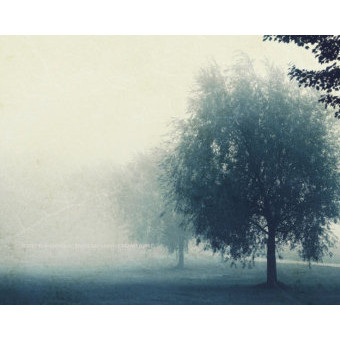Stage Three: Contemplation

Concentration provides the foundation for contemplation (dhyana). While the two can be developed together rather than in "stages," as I present here, we will have no ability to contemplate if we have no ability to concentrate. It's for this reason that I presented concentration as a prerequisite for contemplation. Contemplation leads to a variety of "enlightenment experiences" such as jiànxìng (kensho in Japanese), and wù (satori in Japanese).
Once we have worked with any of the "cross-over" concentration techniques discussed in Part 2, we will have experienced at least short periods of contemplation. For example, as we are counting breaths we may observe our mind detaching: instead of us forcing ourselves to concentrate on the breath, it may seem as if the breath has taken on an existance of its own, the mind an observer rather than a willful enactor of the process. In this way, the object of concentration effectively becomes the actor, and we become the ones acted upon. This state of active observation without forceful intent is the essence of contemplation.
Initially, it may be difficult to maintain this state of awareness because there is a reflexive tendency to want to evaluate and analyze the experience itself, which immediately brings us out of it. Some people mistakenly identify their first encounter with contemplation with an enlightenment experience. Although contemplation is a precursor to enlightenment expeiences--and it's valuable to acknowledge the progress made so far--it's not wise to congradulate ourselves or react with pride: doing so can stop us in our tracks and prevent further progress.
Chan provides two sides to spiritual development: one grounded on seated forms of practice, the other grounded in our daily lives of activity. Historically, a common Chan approach to contemplation practice has been through the application of "mind puzzles." Initially, these were encounter dialogues, or "sayings of the great masters." Contemporary historians and theologians have concluded, however, that they were most likely a socio-religious invention during the Song Dynasty intended to glorify earlier Tang masters, some of whom were likely invented through a fabricated storyline.[Ref 1.] The more famous of these works include the Anthology of the Patriarchal Hall (952 CE), Records of the Transmission of the Lamp (c. 1005 CE), the Blue Cliff Record (c. 1130 CE), and the The Gateless Barrier (c. 1250 CE). An example of an early dialoge from the Record of the Transmission of the Lamp (quoted by Chung-Yuan, 1971, xi):
Ta-chu Hui-hai, an eighth-century Buddhist, once went to visit the great master Ma-tsu (Kiangsi Tao-i). The Master asked him, "Why do you come here?"
Ta-chu replied, "I come seeking enlightenment."
The Master said, "Why should you leave your home to wander about and neglect your own precious treasure? There is nothing I can give you. Why do you seek enlightenment from me?"
The visitor pressed him for the truth: "But what is my treasure?"
The Master answered, "It is he who has just asked the question. It contains everything and lacks nothing. There is no need to seek it outside yourself."
As Chan evolved during the Song, so too did the literary form of encounter dialogue. The dialogues were used as seeds for sermons (Dharma talks), and over the centuries they were modified and appended, with each successive version adding new layers of commentaries, poems, commentaries of commentaries, commentaries of poems, etc.
From encounter dialogues arose gung-ans (koans), generally short, inexplicable, dialogues that could be used as seeds for contemplation. An example from the Book of Serenity (Cleary, 1990, p. 167):
Linji said to the assembly, "There is a true man with no rank always going out and in through the portals of your face. Beginners who have not yet witnessed it, look! Look!
Then a monk came forward and said, "What is the true man of no rank?"
Linji got down from the seat, grabbed and held him: the monk hesitated. Linji pushed him away and said, "The true man of no rank--what a piece of dry crap he is!"
Later, an alternative to the koan became popular: the hua-tou. The hua-tou, translates as "head word" or "critical phrase." The idea is to take an inscrutable question, like "Who is it who drags this corpse around?" and contemplate it until it opens itself up to understanding, revealing an enlightenment experience. The interested reader can learn more about the hua-tou practice here.
There are other common contemplation methods used by Chan practioners as well. Negation practice, in which we negate our attachments to sensory experiences, helps us detach from the sensory world (read more about this practice here). Visualization practices engage us to imagine/invoke a celestial divine-form (archetypal image) of a primal emotion/instinct such as compassion, often represented in Buddhism by Avalokiteśvara.
Unlike concentration practices that condition the mind to focus intently for extended periods of time, contemplation practice severs the mind of its pre-existing bonds formed from engagement with the sensory realm and lead to personal detachment from it. Detachment allows us to not identify ourselves with sensory experience and to more fully focus our attention on the present moment. It also brings clarity and harmony of mind and body.
And it leads to meditation--samadhi--discussed next.
Ref 1. See, for example, Patriarchs on Paper, A Critical History of Medieval Chan Literature, by Alan Cole, University of California Press, 2016.
